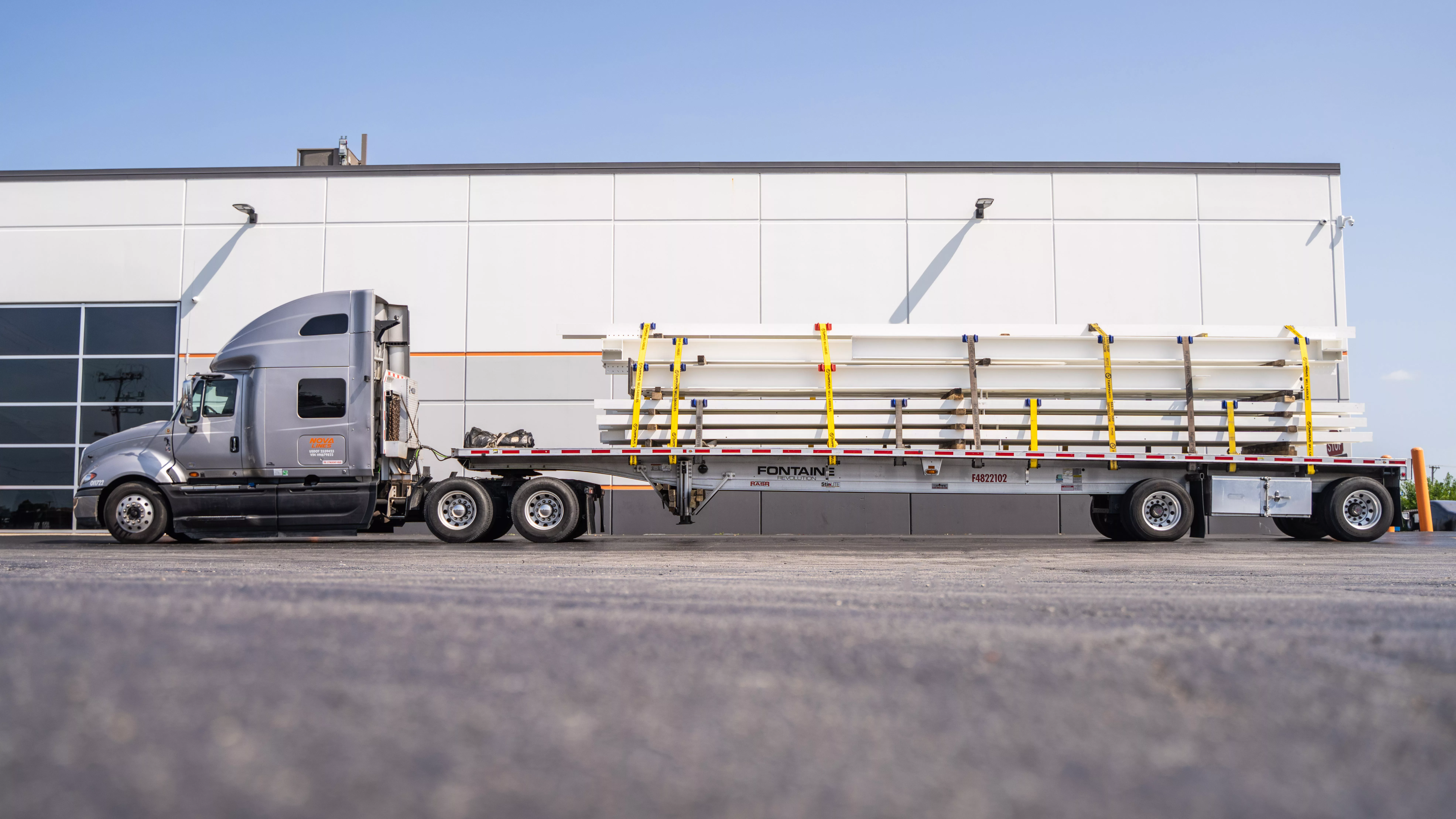Estimating flatbed expenses, while essential for effective budgeting in supply chain logistics, can be a complex task. The lack of transparent information from carriers and transportation providers regarding pricing factors has left shippers at a significant disadvantage.
In response to this challenge, it is important to extensively examine open-deck freight pricing dynamics, aiming to empower shippers with the knowledge required to make informed decisions about their transportation expenses. The following article explores the complexities of flatbed shipping costs, highlighting the primary factors influencing pricing for open-deck freight transportation.
Factor #1: Load Specifics
Each open-deck shipment is distinct, and its characteristics significantly impact the overall cost. Parameters such as the dimensions and weight of the freight are pivotal in determining the appropriate open-deck trailer type and associated expenses. Notably, height, width, and length are critical dimensions affecting transportation complexity. For instance, specialized equipment may be required for loads exceeding standard thresholds, leading to higher costs due to factors like over-dimensional permitting.
Factor #2: Equipment Type
Various open-deck trailer types, including flatbeds, step-decks, and lowboys, are available for transporting different types of freight. Specialized trailers necessitate specific skills and expertise from drivers, influencing pricing inconsistencies. Moreover, the limited availability of certain trailer types can lead to increased costs for trailers in high demand.
Factor #3: Origin and Destination
The location where a shipment originates and its final destination significantly impact pricing. The availability of outbound freight, the presence of trucking networks, and the potential for deadhead miles all influence the cost of transportation. Locations with higher demand for trucking services generally offer more favorable rates, whereas areas with limited availability may incur higher expenses.
Factor #4: Seasonality
Seasonal shifts in demand and supply have a profound effect on open-deck freight rates. Industries experiencing fluctuations in capacity requirements during different times of the year contribute to pricing dynamics. For instance, regions with heightened demand due to seasonal activities may witness increased transportation flatbed expenses as shippers compete for available trailers.
Factor #5: Length of Haul
The distance a shipment needs to travel plays a significant role in determining the final flatbed expenses. Longer hauls generally result in higher expenses, reflecting the increased commitment of time and resources by the transporting driver. Nevertheless, longer distances can also lead to certain efficiencies that mitigate the per-mile rate, akin to bulk discounts.
Factor #6: Shipment Urgency
The urgency of transportation demands affects pricing due to the immediate nature of last-minute shipments. Providers need sufficient lead time to optimize their operations and allocate available resources effectively. Short notice requests often result in higher costs to accommodate the expedited nature of the service.
Factor #7: Accessorial Charges
Additional services, such as tarping, liftgates, and unloading assistance, incur extra charges that contribute to overall flatbed expenses. Shippers can minimize these charges through careful planning and coordination to ensure the efficient execution of transportation services without unnecessary added expenses.
Factor #8: Weather Conditions
Weather conditions play a crucial role in open-deck freight transportation. Inclement weather can impact driver safety and necessitate additional precautions, such as tarping to protect the freight. As a result, transporting goods during adverse weather conditions may involve higher flatbed expenses due to increased risks and resource allocation.
Navigating Your Flatbed Expenses
As you delve into the details of open-deck freight transportation costs, you’ll develop a comprehensive grasp of the factors affecting pricing. While your individual shipment may not be influenced by every factor mentioned above, recognizing their significance can greatly enhance your budgeting and decision-making process.
For an accurate assessment of your transportation expenses, reach out to our transportation experts at Nova Lines. Our team possesses the knowledge and insights needed to offer clear and precise pricing tailored to your freight’s specific needs and the current market conditions.
Say goodbye to uncertainty in your transportation partnerships and gain the confidence to make well-informed choices regarding your shipping. Contact us today for expert guidance and to uncover the expenses involved in your open-deck freight journey.
FAQ
Accurate estimation requires providing detailed information about your shipment, including dimensions, weight, origin, destination, and lead time. Sharing these specifics with transportation experts allows for a more precise cost assessment.
Specialized trailers require specific handling and expertise from drivers, resulting in higher expenses. Additionally, limited availability of certain trailer types due to their unique features can contribute to increased pricing.
Efficient planning and coordination with your transportation provider can help minimize accessorial charges. Clearly communicate your shipment’s requirements, ensuring that necessary services like tarping or unloading assistance are factored into the initial pricing.
Seasonal shifts in demand and supply can lead to fluctuations in open-deck freight rates. Increased demand during peak seasons may result in higher pricing as carriers manage limited capacity.
Providing ample lead time (48-72 hours) allows transportation providers to plan efficiently, potentially resulting in cost savings. Adequate lead time enables carriers to allocate resources effectively and offer competitive pricing.
Yes, negotiation is possible based on factors such as shipment volume, frequency, and long-term partnerships. Building a strong relationship with your transportation provider may lead to favorable pricing arrangements over time.
You might also like:
Oversized Freight: Permits and Regulations
Spot Market vs Contract Rates: What Should Shippers Focus On
